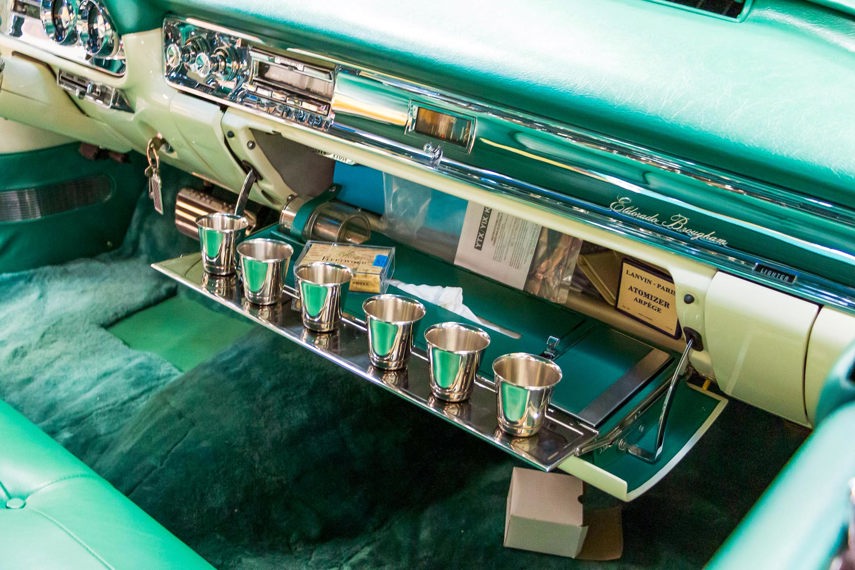The automotive accessory market is massive and thousands of automotive accessories ranging from stickers and floor mats to heated wiper blades are available. The auto accessory has been around as long as the automobile, and while some of those accessories have been good, some of them have been completely baffling. Here are nine of the wildest automotive accessories from the past that we can’t believe ever seemed like a good idea.
Cadillac Eldorado Dashboard Shot Glasses
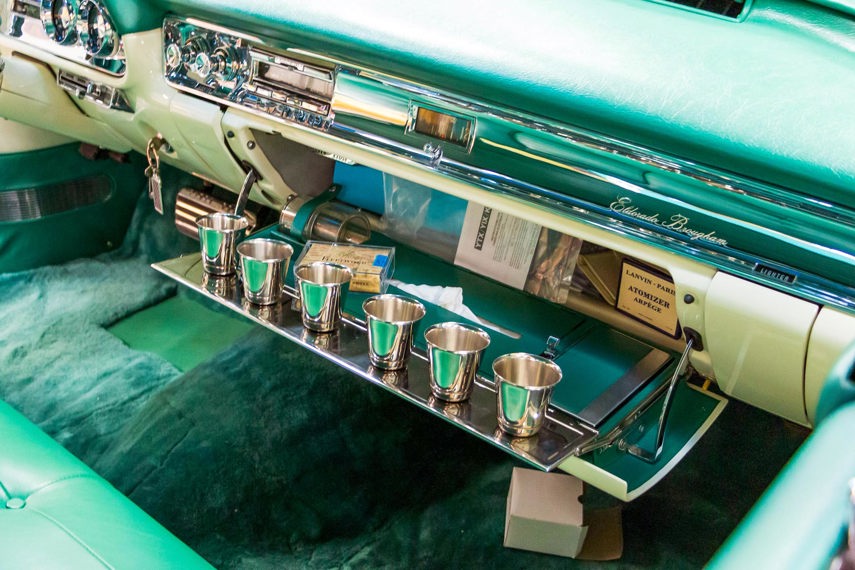
Evan Williams / AutoTrader.ca
In 1957, if you wanted the most luxurious car you could buy, the only choice was a Cadillac Eldorado Brougham. Only 400 of these topline sedans were built, loaded with features beyond compare (for the time) like air suspension and a stainless-steel roof. One of the accessories that you could order with this Caddy was a set of shot glasses. That’s right, a set of four metal shot glasses with magnets on the bottom that made sure you could serve shots on the go without them toppling over at speed. Today we can’t keep drivers off of their cellphones, but the 1950s were a very different time when drinking and driving was not as frowned upon as it is today.
Lit Cigarette Dispenser

SenseiAlan / Flickr
Smoking cigarettes was almost universal not too long ago, and the 12V-powered cigarette lighter accessory you still find in cars today is a legacy of those days. Back then, lighting a dart by hand was too much effort. Instead, a handful of companies like Pres-A-Lite and Ronson offered an accessory that would hold a pack of smokes and then dispense a lit cigarette to you when you needed one. It’s probably safer than manually lighting one, though safety is all relative when you’re talking about smoking.
Dashboard Coffee Pot
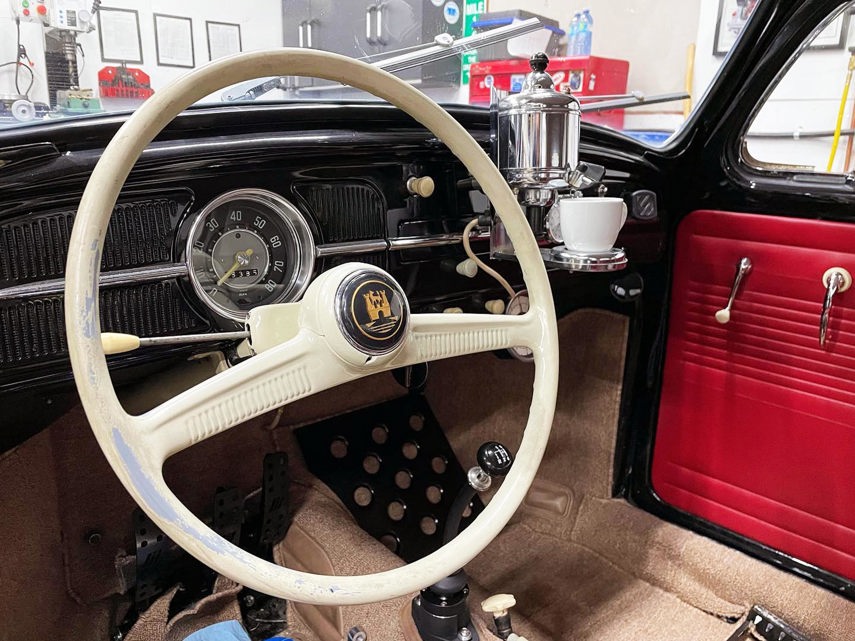
Dave Hord
Today, it’s hard to drive an hour anywhere in the country without seeing at least one drive-thru coffee place, but 40 years ago, it was a much less common sight. Even McDonald’s didn’t open its first drive-thru window until 1975! What was a caffeine-craving driver on the go to do? Enter the Hertella Auto-Kaffeemaschine. It was an ultra-rare coffeemaker that was designed to run on 6V or 12V power and to fit in the Volkswagen Beetle. A heating matrix warmed the water, and it brewed coffee placed in a filter screen. Was the coffee good? Probably not. Was it a better idea than the exhaust-powered heater of a vintage Beetle? Probably. It also came with porcelain coffee mugs with a magnetic bottom.
Factory Accessory Electric Shaver
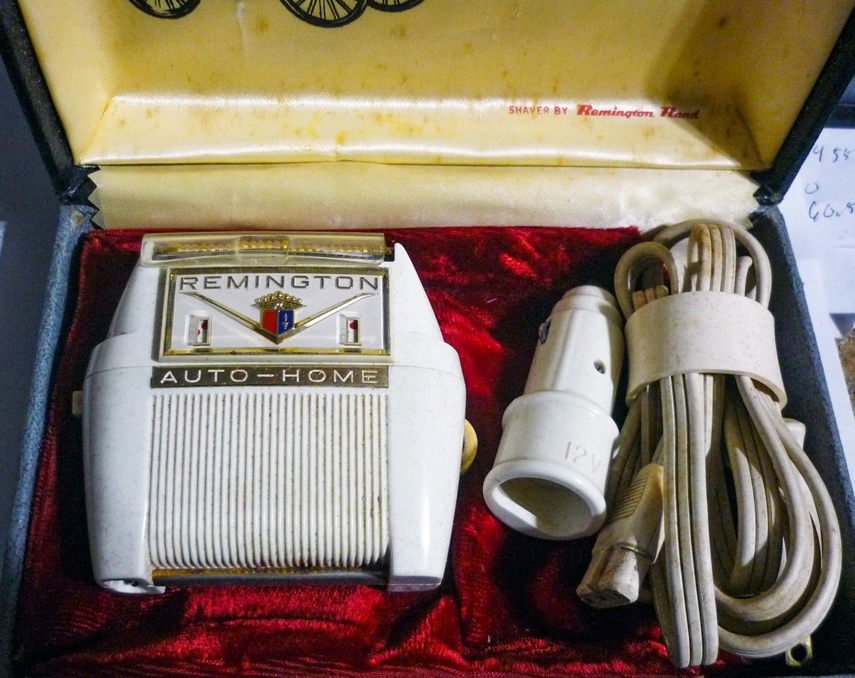
Shock Store Harley Chevrolet Parts / eBay
Even better for the driver on the go than coffee, how about an electric razor meant for your car? The electric razor gained serious buzz after the Second World War, becoming increasingly popular through the 1960s, so automakers jumped on it, with Cadillac, Oldsmobile, and Chevrolet offering plug-in razors as an accessory option. Even AMC got in on the trend, though they arrived late to the party, with American Motors and Remington giving away 100 1969 AMX cars (with 390 V8 and four-speed transmission) with a 12/120V auto-home shaver attached.
Window-Mount Air Conditioning
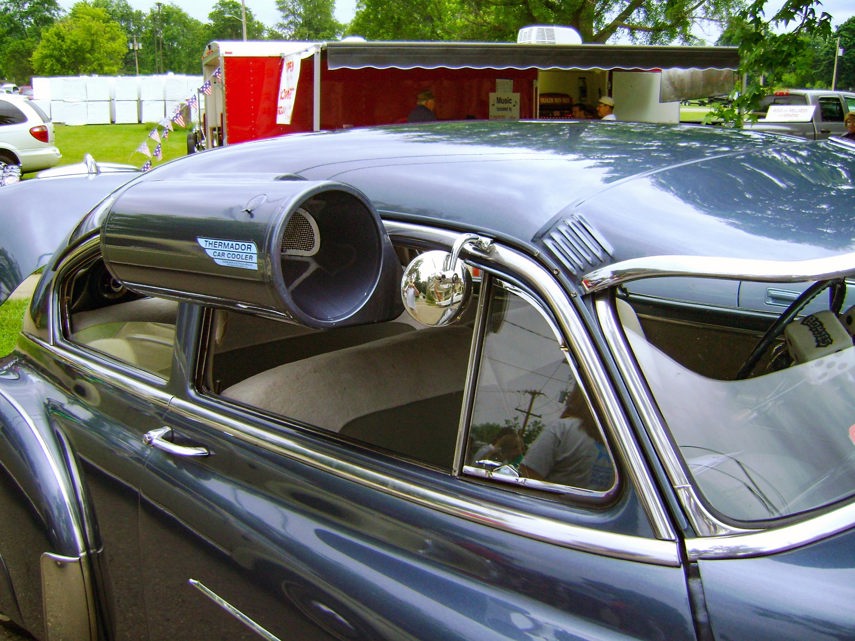
Doug Coldwell
The first factory-installed car air conditioning came from Packard in 1940, but it would take another 30 years before half of new vehicles offered the system that could take a hot humid car and turn it into something more tolerable. What did you do if your car didn’t have air conditioning? An accessory from a company called Thermador was there to help. The Car Cooler used evaporation of water to cool air inside a tank strapped to your window. That cool air was then blown inside the cabin of your car. It wasn’t perfect, but it was better than nothing. The tech was called a “swamp cooler,” which is ironic since it only works in areas of low humidity. About 3.8L of water would cool the cabin (if only slightly) for around 200 km before needing a refill.
Radiator Cap Gauges
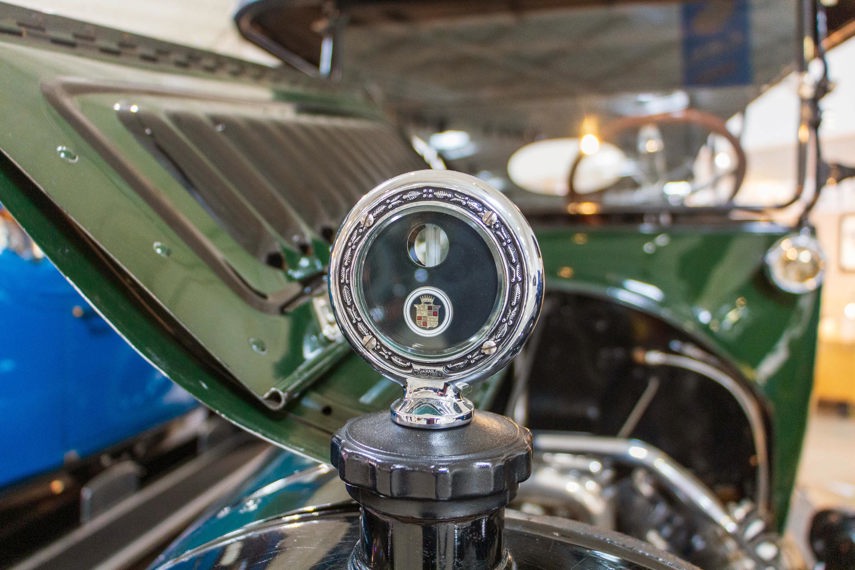
Evan Williams / AutoTrader.ca
Radiator caps used to be more than just fancy hood ornaments in the days when such things adorned nearly every vehicle on the market; you could also get accessory radiator caps that would give you useful information. A thermometer inside the cap would send a clear indication to you, the driver, as to just how hot your engine was. That way you could stop and let things cool off before they reached the boiling point and exploded in an overheating mess. Some of these caps would also show your coolant level, letting you know that there was, in fact, liquid still in the radiator as you drove. Take a close look at just how small the gauge is, though, and remember how long a vintage car’s hood is, and the gauge suddenly becomes less useful.
The Dog Sack
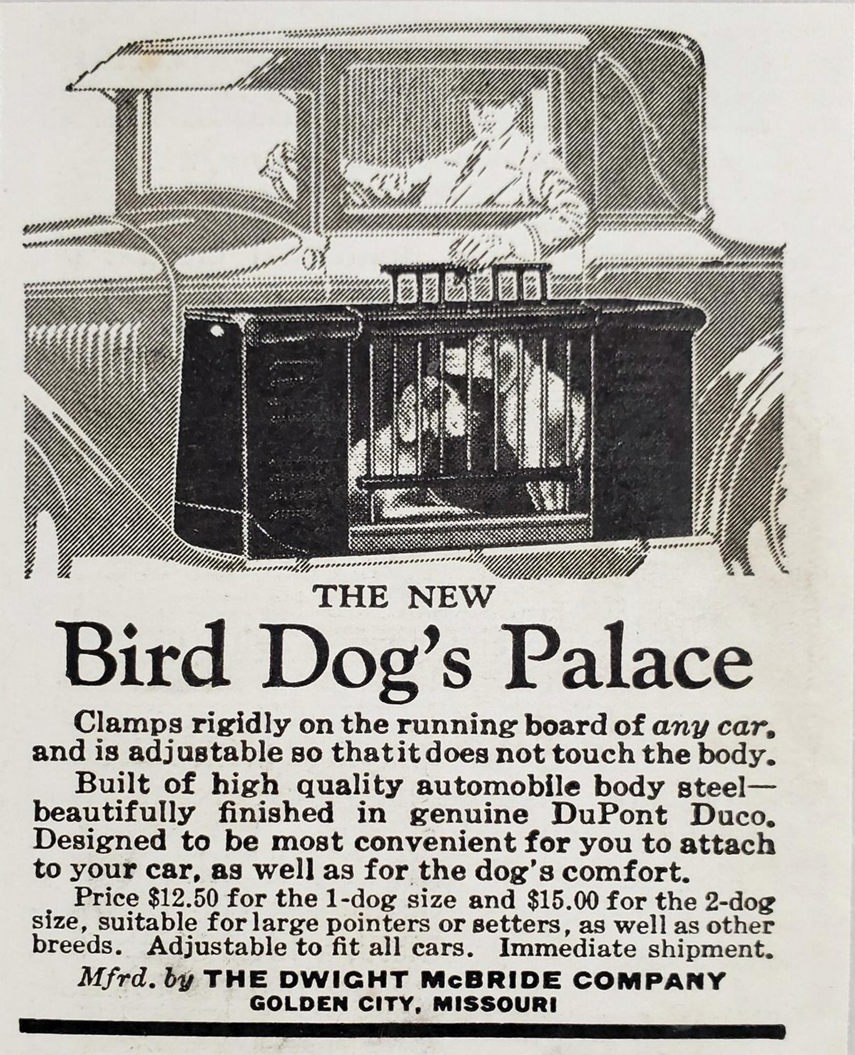
johnseller / eBay
Dogs have been riding in cars for as long as there have been cars. Before that, they ran alongside horse and carriage. Some early automotive accessories allowed you to attach a dog crate to the running board of your car, letting you bring Fido along while keeping them outside of the car. It may not have been the safest way to travel, and the crates seem to block you from opening the driver’s door, but at least cars of the time didn’t drive particularly quickly and the crates had solid sides for front and rear for protection from debris.
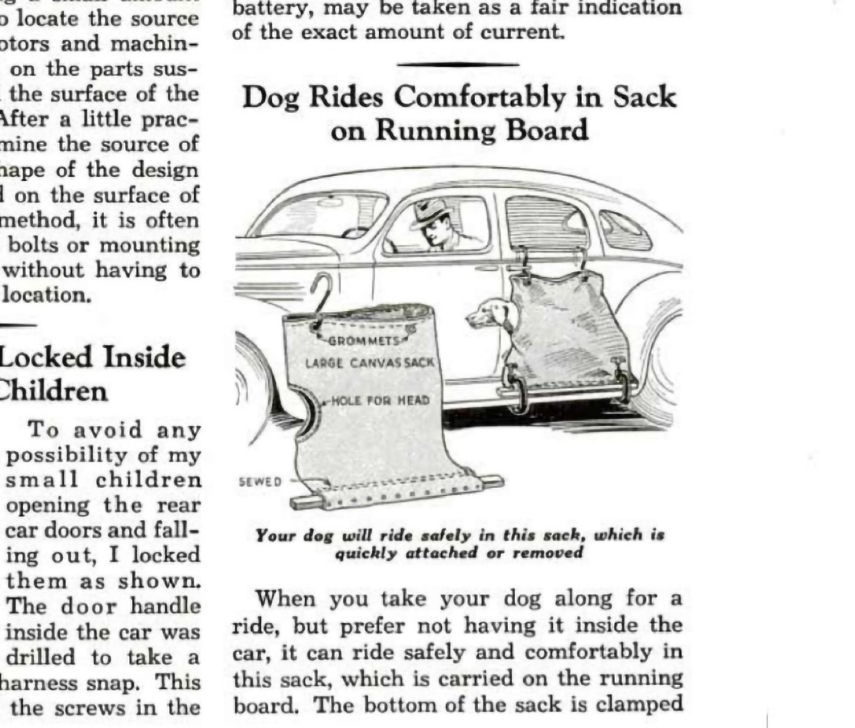
Popular Mechanics
This one, though, terrifies us. From a 1936 issue of Popular Mechanics, this doggie bag is a canvas sack that attaches to your window frame and running boards. Your dog “can ride safely and comfortably in this sack.” With their head out and no protection from much of anything. No thanks.
Child Safety Hammock
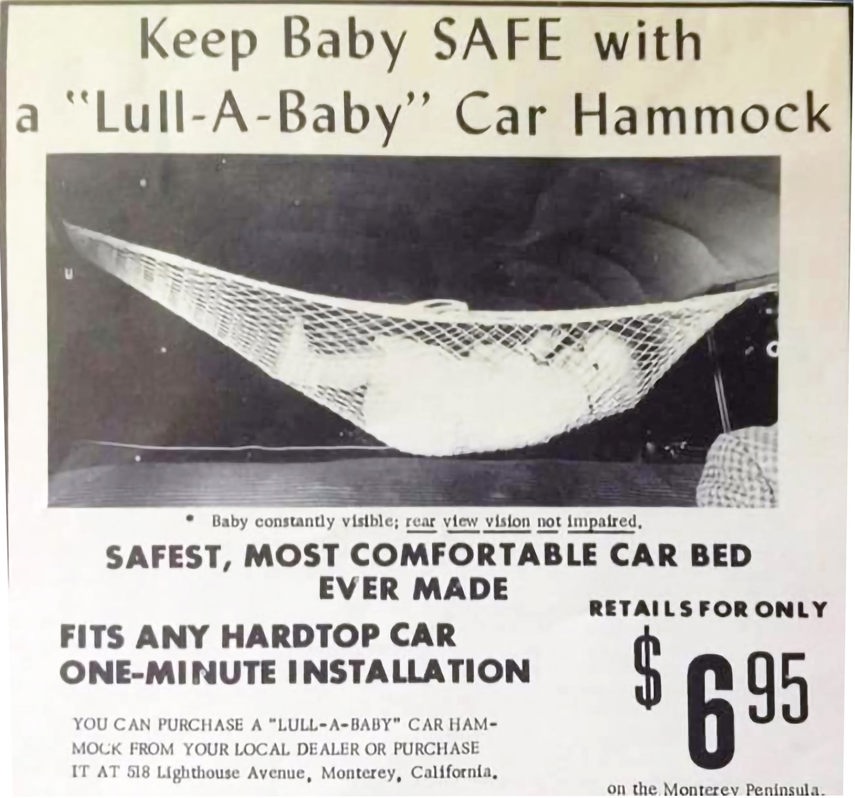
Today’s child safety seats are impressive feats of engineering that do an amazing job of keeping tiny humans safer in a crash than ever before. Back in the day, though, your choices for child seats were less impressive. Forget about those tubular steel child seats that look like they were designed to inflict maximum damage; there was a time when you could buy a hammock for your toddler and that was about it. Yes, a hammock, designed to fasten in the rear of your car, to hold your baby. We’re at a loss for words here, but, again, it was a different time.
Suspension Wheels
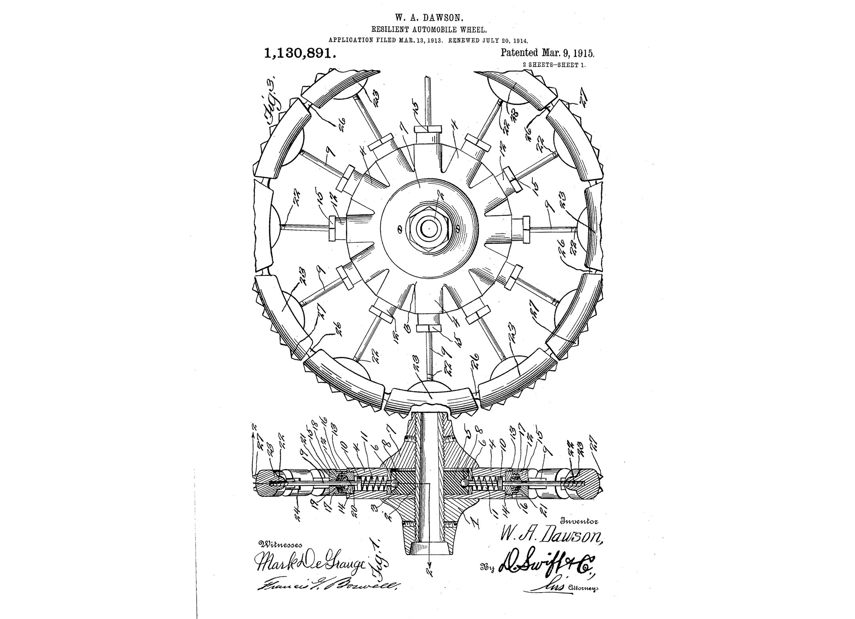
W. A. Dawson / USPTO
In the very early days of the car, suspension systems were little more than a couple of leaf springs borrowed from a horse-drawn wagon. In attempts to add some more cushion to early vehicles like the Ford Model T, accessory companies came up with new wheel designs. Some had simple metal leaf springs taking the place of the usual wheel spokes, but some designs, like this one patented in 1914, had pushrod spokes and coil springs in the wheel hub, with a rubber plate helping to provide more suspension damping and a more comfortable ride. Since they didn’t exactly catch on, we’re not sure that they worked all that well.
